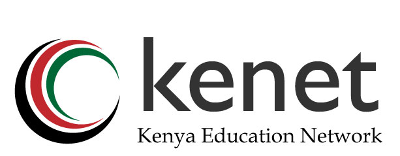You are here
Best Practices to Achieving Accessibility in Digital Learning
Educational institutions must adopt vital principles of accessibilty to create all inclusive learning programs. Accessibility means that all learners can perceive, understand, navigate and interact with ease as all learners can benefit from more accessible training content. As technology enables us to move towards creating more attractive and interactive eLearning courses, we risk widening the gab between the training experience of those with and without disabilities even further. By using standardized formats which cater to all user requirements we are able to create innovative eLearning material with accessibility at the heart of it.
Faculty and instructional designers should put into account the usefulness of writing, designing and developing accessible eLearning course content when building courses guided by these three principles :- Universal design, universal access and universally acceptable.
Universally acceptable
Writing accessible eLearning course content involves the use of clear sentences in simple language and easily understood by learners. The flow of ideas should be logical with provisions for usage for visual alternatives such as multimedia to accomodate different learning needs.
Universal design
During the dedsign process, select a Learning Management System (LMS) built with accessibility in mind- like Moodle. Provide "alt tag" text to describe all images, diagrams and graphs provide captions or transcripts for multimedia content such as video and audio. Avoid flickering visual content that may put learners at risk of seizures and check for colour contrasts to ensure that all of your learners can clearlt see your content.
While building content to the LMS, use content editor's formatting tools correctly to give a better experience for screen-reader users. Use the correct "styles" to organize and identify different levels of headings : H1, H2, H3,H4. Use the inbuilt bulleting or numbering feature. Do not use coloured or highlighted text to make passages stand out instead use bold for importance, italic for emphasis and "blockquote" for quotes. Most importantly, stick to the consistent navigation.
Universal access
Whilst you will try your best to achieve accessibility in eLearning, it is always good to get feedback from learners on how they feel about the course by asking them to show you areas in which they are having trouble and barriers they are facing that are impeding their learning experience. This can be done by providing your contact details such as email address, making sure of the chat function in the LMS or planning for a live session to handle questions and answers. The information will help shape your eLearning content to be accessible.
Ready to start designing accessible courses but do not know where to start? Look no further, KENET is available to offer further support.
Faculty and instructional designers should put into account the usefulness of writing, designing, and developing accessible eLearning course content guided by these three principles: - Universal design, universal access and universally acceptable when building courses.
Universally acceptable
Writing accessible eLearning course content involves the use of clear sentences written in simple language and easily understood by learners. The flow of ideas should be logical with provisions for usage of visual alternatives such as multimedia to accommodate different learning needs.
Universal design
During the design process, select a Learning Management System (LMS) built with accessibility in mind - like Moodle. Provide “alt tag” text to describe all images, diagrams, and graphs, provide captions or transcripts for multimedia content such as video and audio.
Avoid flickering visual content that may put learners at risk of seizures and check for colour contrasts to ensure that all of your learners can clearly see your content.
While building content to the LMS, use content editor’s formatting tools correctly to give a better experience for screen-reader users. Use the correct ‘styles’ to organize and identify different levels of headings: H1, H2, H3, H4. Use the inbuilt bulleting or numbering feature. Do not use coloured or highlighted text to make passages stand out instead use bold for importance, italic for emphasis, and "blockquote" for quotes. Most importantly, stick to consistent navigation.
Universal access
Whilst you will try your best to achieve accessibility in eLearning, it is always good to get feedback from leaners on how they feel about the course, ask them to show you areas in which they are having trouble and barriers they are facing that are impeding their learning experience. This can be done by providing your contact details such as email address, making use of the chat function in the LMS or planning for a live session to handle questions and answers. The information will help shape your eLearning content to be accessible.
Ready to start designing accessible courses but do not know where to start? Look no further, KENET is available to offer further support.
